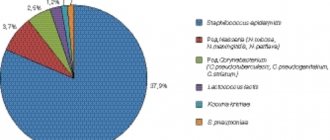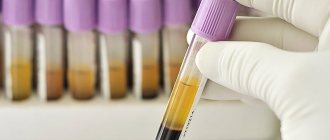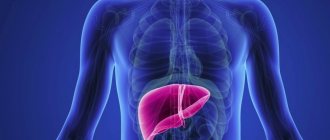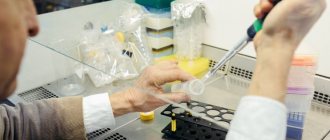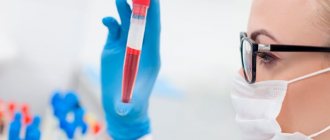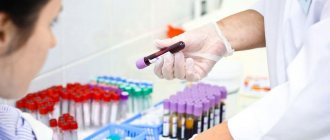HIV tests
HIV is a virus of the retrovirus family that attacks the human immune system. It is the only cause of the development of AIDS.
There are 2 types of virus:
- HIV-1 is the most common type among the population. Found in Russia, USA, Europe, Japan, Australia.
- HIV-2 is a rarer type that is widespread in West Africa.
Today, modern test systems are used to diagnose the disease, capable of detecting the presence of a pathogen within 2 weeks after entering the body. Until recently, the only way to diagnose the disease was first-generation test systems, with which it was possible to detect viral cells only 6-12 weeks after entering the body.
Modern combined HIV analysis has a number of advantages. The main thing is that this test can detect the virus within 1-4 weeks from the moment of infection, before seroconversion. This significantly reduces the “window period” and allows you to provide the necessary medical care in a timely manner.
This test is also capable of detecting antibodies to HIV-1 and HIV-2 in the blood, which are produced in sufficient quantities to be detected by the test system within 2-8 weeks from the moment of infection. This helps identify which type of virus a person is infected with.
It is noteworthy that at the terminal stage the AIDS test for HIV antibodies may give a negative result. This is due to a disruption in the mechanism of antibody production.
Main stages of HIV infection
The incubation period of HIV infection is also called the “seronegative window period.” This is the name given to the period from the moment of infection to the development of protective antibodies to the virus in the blood. At this time, tests for antibodies to HIV will give a negative result, but the person is already a spreader of the infection. This period can last from 2 weeks to 6 months, depending on the individual characteristics of the body.
The period of acute HIV infection begins 2-4 weeks after the pathogen enters the body and lasts approximately 2-3 weeks. At this point, some patients experience mild symptoms of the disease, similar to flu-like symptoms, which actually indicates active replication of the virus. However, in the vast majority of cases, the latent stage of the disease occurs without any symptoms. During this period, immunity steadily decreases, and the number of viral cells in the blood increases significantly. AIDS is the final stage of development of HIV infection. Human acquired immunodeficiency syndrome is characterized by severe suppression of the immune system, as well as the occurrence of concomitant pathologies, including encephalopathy and cancer.
There is currently no cure for HIV infection; the disease is incurable. However, effective antiretroviral therapy has been developed, which significantly improves the quality of life of the infected patient.
Purpose of the test
This type of study is of great diagnostic value if the infection occurred shortly before the time of testing. With early diagnosis, further spread of the disease can be controlled. This will also help you start taking special medications on time that can stop the progression of HIV infection.
Indications for the study
There are a number of situations in which a patient is required to undergo an HIV test:
- Persistent symptoms of unknown origin: low fever, diarrhea, night sweats, sudden weight loss, swollen lymph nodes.
- Constantly recurrent herpes infection, pneumonia, viral hepatitis, tuberculosis, toxoplasmosis.
- If the patient is diagnosed with one or more sexually transmitted diseases - syphilis, gonorrhea, chlamydia, genital herpes, bacterial vaginosis or others.
- If a person had unprotected sexual contact with a new partner whose HIV status was not sure.
- After undergoing a blood transfusion procedure (in fact, infection is practically excluded in this way, because the biological material is carefully tested for a huge number of different infections, and is also subjected to special heat treatment).
- If we are talking about drug addiction using unsterile instruments.
- During pregnancy or when planning it. Today, doctors have developed tactics that can help reduce the risk of a child becoming infected by an HIV-positive mother to almost zero - taking azidothymidine during pregnancy, prescribing a cesarean section to avoid transmitting the virus to the child during passage through the birth canal, and refusing to breastfeed.
- Accidental injection with a syringe or other sharp object containing infected blood. However, the likelihood of infection in this way is extremely low.
Decoding the HIV test
The greatest likelihood of an informative diagnosis of HIV occurs 12 weeks after infection. During this period, the concentration of antibodies is sufficient to detect them in 95% of cases. For example, a month after infection, the probability of their detection is only 60-65%.
If a person receives a positive HIV test result, it is recommended that the test be repeated - preferably several times. It is highly recommended that it be carried out in other ways in order to accurately confirm or refute the presence of the disease, because often the results of the study are false positive.
The result is considered positive if two tests performed on different equipment using different methods detect antibodies to HIV in the blood.
In what cases is it necessary to be tested for HIV?
You should undergo diagnostics if there have been cases of potential risk of infection. Also, there are clinical criteria that you should focus on and get tested. It is worth getting tested for HIV if you experience these symptoms
:
- persistent increase in temperature for no apparent reason;
- prolonged diarrhea without accompanying symptoms;
- loss of body weight with a normal diet and physical activity;
- long-term colds, pneumonia;
- sepsis;
- cough that doesn't go away;
- enlargement and pain of lymph nodes of different groups;
- development of atypical pneumonia;
- purulent-inflammatory processes on the skin and mucous membranes that are difficult to treat;
- herpes zoster;
- damage to the oral mucosa (candidiasis, gingivitis);
- tuberculosis;
- damage to peripheral innervation;
- Kaposi's sarcoma;
- recurrent infectious pathologies.
These conditions indicate reduced immunity. This is not necessarily caused by HIV infection; there may be other conditions. However, the diagnostic search must begin with this analysis in order to exclude pathology or start treatment on time.
Tests for coronavirus
- Test for coronavirus
- Coronavirus test for organizations
- Testing for coronavirus at home
- Testing for coronavirus at home in 12 hours!
- Testing for coronavirus in Lyubertsy in 12 hours!
- Testing for coronavirus in Nekrasovka in 12 hours!
- Testing for coronavirus in Korolev in 12 hours!
- Test for coronavirus on the Sokol metro station
- Coronavirus test at Kolomenskaya metro station
- Coronavirus test at Voykovskaya metro station
- Test for coronavirus in Nekrasovka
- Coronavirus test in Korolev
- Test for coronavirus in Lyubertsy
- Test for coronavirus in Mytishchi
- Test for coronavirus at home Mytishchi
- Test for coronavirus at home Korolev
- Test for coronavirus at home Lyubertsy
- Test for coronavirus at home Nekrasovka
Any tests can be taken at clinics in the East Clinic network.
Types of laboratory diagnostics
There are the following types of HIV diagnosis:
- virological;
- serological;
- study of immune status;
- bacteriological analysis.
Let's look at each type of diagnosis in more detail.
Virological diagnostics
Immune blood cells, bone marrow leukocytes, body tissues, plasma, saliva, sperm, and cerebrospinal fluid are used for research. The material infects a culture of lymphocytes. The presence of HIV in the material is indicated by the formation of symplasts. To indicate them, CPD methods, electron microscopy, immunofluorescence, and study of transcriptase activity are used. The sensitivity of the method is so high that it can detect one infected cell out of a thousand examined. Monoclonal antibodies are used to detect viral antigen in a lymphocyte.
The most optimal diagnostic option is PCR - polymerase chain reaction. The technique allows you to predict the patient’s condition and determine the severity of the viral load on the body. The idea is to determine copies of the RNA virus in the patient's plasma.
Serological diagnosis
Blood serum is used for the study. An enzyme immunoassay is used. It is based on the “antigen-antibody” reaction. To carry out diagnostics, standard diagnostic systems are used that react to the presence of antibodies in the serum. The method is screening and must be confirmed if the answer is positive.
For this purpose, the immunoblotting method is used. This is a way to confirm the diagnosis and more clearly determine which viral proteins the patient has antibodies to. The basis of diagnosis is the difference in molecular weight. The result is the determination of antibodies to certain HIV antigens.
Immune status study
To assess the state of the immune system, the following parameters are examined:
- CD4/CD8 cell ratio, which is normally 2, but in AIDS can be 0.5 or less;
- CD4 immune cell level;
- study of the level of leukocytes, platelets, lymphocytes;
- study of the level of immunoglobulins and immunocomplexes in serum;
- assessment of the response of lymphocytes to mitogens.
Bacteriological diagnostics
Bacteriological diagnostics are used to diagnose concomitant pathologies. For this purpose, Gram staining is used, as a result of which the type of microorganism can be determined.
How to do a rapid HIV test: quickly and easily
A rapid test for HIV does not require special preparation (fasting, abstaining from taking medications or alcohol, etc.): the antibodies that have formed to the causative agent of this infection in the blood are not subject to such “external” influences.
The only inconvenient moment in using a rapid test for HIV is the collection of biomaterial: such a quick diagnosis is carried out only using blood. Therefore, to find out the results of a rapid test for HIV, you will need to donate a small amount of blood from a vein or from a finger. If blood is taken from a finger, it must be examined immediately; venous blood can be stored for two days at a temperature of 2-8 C.
How to prepare for diagnosis?
No specific preparation is required for the tests. It is advisable to exclude extraneous factors that affect the state of the blood:
- smoking;
- alcohol consumption;
- pronounced physical and emotional stress;
- stress.
It is better to take the test in the morning, since it is more convenient to come to the clinic on an empty stomach in the morning. The result may be affected by the presence of a viral infection, the menstrual cycle, or a large meal shortly before diagnosis.
Blood sampling takes place under sterile conditions, observing the rules of asepsis and antiseptics. All manipulations are carried out by medical personnel who have the skills to draw blood. It is necessary to ensure proper storage of the biomaterial prior to laboratory testing.
Inspection after hazardous situations
In a situation of casual sexual contact with a partner whose HIV status is unknown, an informative determination of antibodies to HIV in the blood is possible only after three months. The first three months after HIV infection, there is a “window” period when antibodies to the virus are just beginning to be produced and their level is below the threshold value determined by the test systems.
A similar situation occurs if infection through the blood is suspected, for example, when injecting drugs with an unsterile syringe. After dangerous situations from the point of view of HIV infection, if the results of the first examination are negative, it is advisable to take repeated tests every three months for a year.
